Site 4: Early Byron Bay
PREV NEXT
While there is very little written about the growth of Byron Bay town in the decade after the very first quarter acre residential lots were sold in July 1886, old maps show significant planning and development.
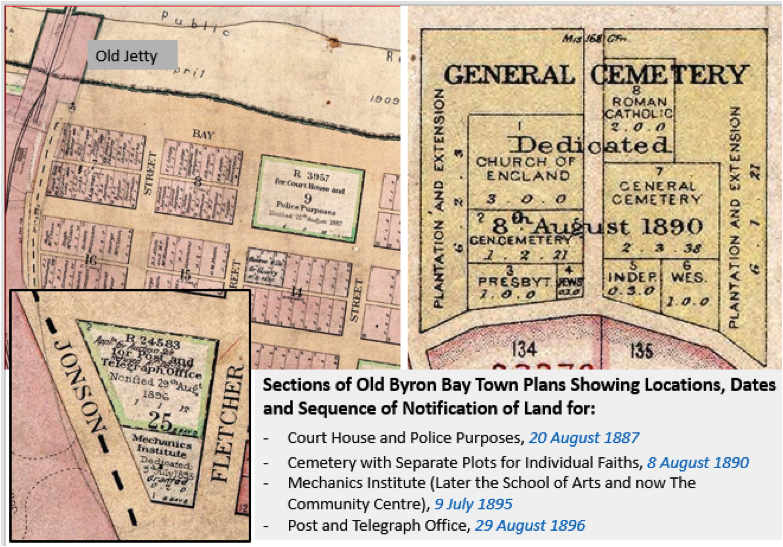
Early Byron Bay Town Plan
The first lot dedicated to services was for a courthouse and police purposes in 1887; the second in 1890 was for a cemetery; with specific areas set aside for the dead of each faith. Then followed land dedicated to a community centre in 1895, a post and telegraph office in 1896, a recreational park in 1896 and a public school in 1897. The first church (Anglican) welcomed worshipers in 1898. This sequence presumably reflects the needs and priorities of a pioneer community at the time.
Land was made available for the jetty completed in 1888 and for the railway line, and station – opened in 1894. Merchants were quick to build and open hotels and restaurants to cater for not just workers and traders but also doctors, visitors and the government officials.
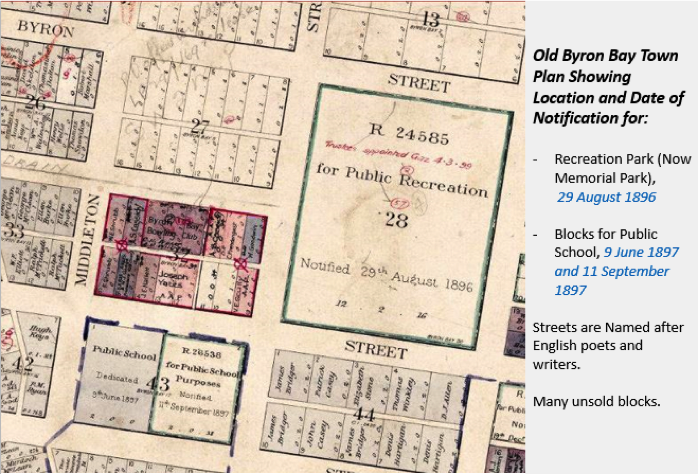
Early Byron Bay Town plan
The first major businesses, such as Norco Dairy Company, saw-millers, shipping companies also acquired large blocks of land in the town for factories, milling, processing and storage. But roads, streets, power and water supply remained rudimentary which in a coastal town built on flat marshland carried its own risks in storms, floods and fire. Nevertheless, the pioneers prevailed and by the start of WWI Byron Bay had become one of the major coastal towns and ports between Sydney and Brisbane. The town’s population is estimated at more than 2300 at that time.
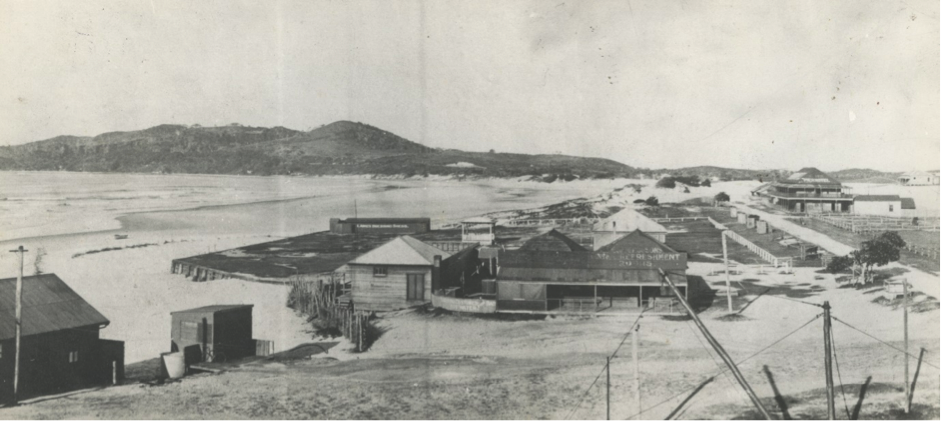
View towards Cape Byron
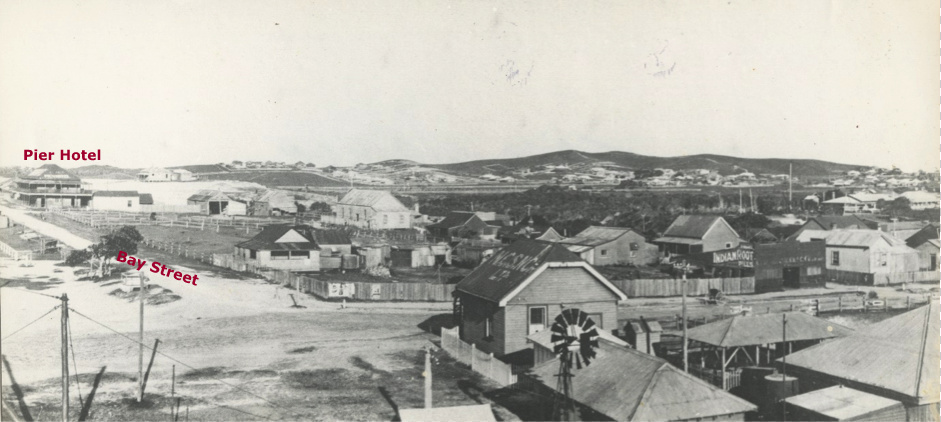
The early township
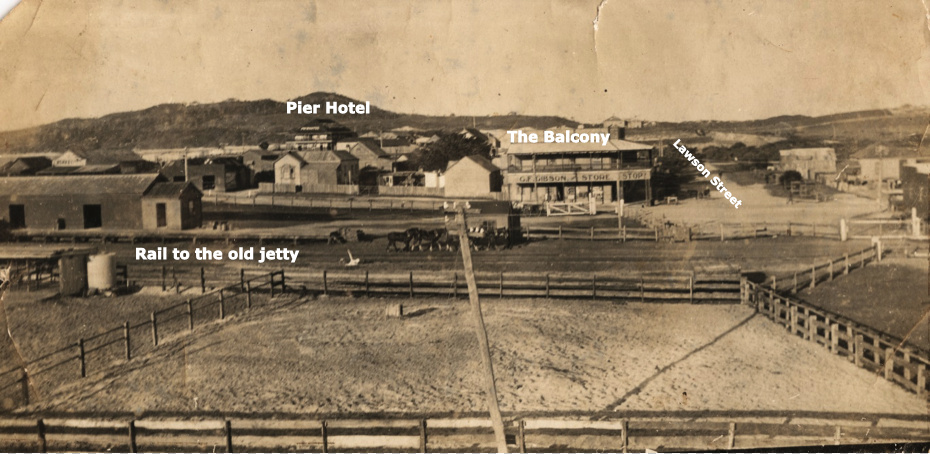
Looking east